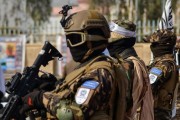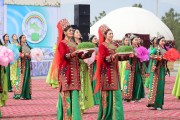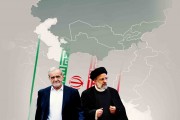Analysis of sectarian violence in Gilgit-Baltistan; a Pakistani Shiite region
Gilgit-Baltistan is a Shia-populated region which is part of Azad Jammu and Kashmir under Pakistan control. Prior to the 1970s, all of the region’s ethnic and religious groups were living in peace and harmony, but after the 1970s, sectarian violence became a major concern in the region which was largely due to some reasons: the reopening of the Karakoram Highway, General Zia-ul-Haq’s decision to impose the Sunni rulings on Shias, the efforts to change the religious context of the region by transferring Sunnis from other regions to Gilgit-Baltistan, the formation of anti-Shia groups with the tacit support of the establishment, the intervention of foreign governments such as Saudi Arabia in supporting anti-Shia sectarianism, and finally the effects of Afghanistan’s jihad in the 1980s. Moreover, due to the lack of official educational institutions, the region has witnessed an increase in the number of religious schools, some of which promote sectarian hatred and extremism. All of these issues have had major impacts on promotion of sectarian violence in the Gilgit-Baltistan region.
By: Maryam Verij Kazemi
The Gilgit-Baltistan is a Shia-populated region which is part Azad Jammu and Kashmir. Unlike other Pakistani states, the Gilgit-Baltistan region has no political representative in parliament or the federal government. In fact, Pakistan's Supreme Court ruled in 1994 that these areas should be considered as part of Jammu and Kashmir state and not part of Azad Kashmir. After November 1, 2020, was designated as the Independence Day of Gilgit-Baltistan, Imran Khan announced that his government intends to give the region the status of a temporary state.
Gilgit-Baltistan is a multilingual region with a wide socio-cultural and ethnic diversity. The region’s four religious groups are as follows: Shia (41%), Sunni (30%), Noorbakshia (6%) and Ismailia (24%). The Sunnis live in the south of the region, which is called Diamir. The Nagar District in the north and Baltistan in the east are mainly Shia-populated (with a small minority of Noorbakshias) and Skardu has also a predominantly Shia population. The areas of Hunza in the north and Ghizer in the west are inhabited by Ismailia .
Prior to the 1970s, all of the region’s ethnic and religious groups were living in peace and harmony, but after the 1970s, sectarian violence became a major concern in the region which was largely due to the reopening of the Karakoram Highway (Part of the China - Pakistan Economic Corridor), General Zia-ul-Haq’s decision to impose the Sunni rulings on Shias, the efforts to change the religious context of the region by transferring Sunnis from other regions to Gilgit-Baltistan, the formation of anti-Shia groups with the tacit support of the establishment, the intervention of foreign governments such as Saudi Arabia in supporting anti-Shia sectarianism, and the effects of Afghanistan’s jihad in the 1980s. Moreover, due to the lack of official educational institutions, the region has witnessed an increase in the number of religious schools, some of which promote sectarian hatred and extremism. All of these issues have had major impacts on promotion of sectarian violence in the Gilgit-Baltistan region.
One of the most important factors that has helped to growth of sectarianism in the region was the rapid expansion of religious schools (Sunni) during the era of General Zia-ul-Haq. These schools are supported by the political-religious parties and mostly funded by some of the Persian Gulf’s Arab states. General Zia-ul-Haq supported the Sunni Islam because he could use it to legitimize his military rule. General Zia-ul-Haq's most controversial Islamization program was the imposition of ushr and zakat (a kind of Islamic tax) that the government ordered to be automatically collected from people's bank accounts. It should be noted that the legal status of Shias and Sunnis, like many other fields of law, is quite different in terms of their definition of zakat. Thus, the government's decision to impose ushr and zakat according to the orders of the Hanafi School caused great anger among Shias and proved to be a powerful stimulus for their political mobilization in Pakistan.
Therefore, the implementation of the Hanafi jurisprudence became the starting point of the Shia resistance in Pakistan. The Shias called for a tax exemption due to religious reasons, and strongly resisted against General Zia-ul-Haq's efforts and planned a large-scale demonstration in 1980 that led to their exemption. However, this event sowed the seeds of anti-Shia sentiment in Pakistan. Even in 1999, when the textbooks were solely based on the Sunni beliefs and practices, the Shia community launched a campaign to change the curriculum, especially in the religious textbooks; and these protests eventually forced the government to remove the controversial Islamic and Urdu contents from the curriculum. It was during the era of Zulfikar Ali Bhutto in the mid-1970s that the first sectarian clashes took place in Gilgit-Baltistan. These clashes used to be intensified every year during Muharram. Especially after 1988, the disputes over observation of the moon in Shawwal became more violent, unpredictable and intense.
The geopolitical and geostrategic position of the region is also considered as a factor behind the growth of ethnic tensions, because without the use of the Gilgit-Baltistan geographical space, the implementation of the China-Pakistan Economic Corridor (CPEC) project was almost impossible. " While unlocking Gilgit-Baltistan from its physical isolation and ushering in economic opportunity, the highway has also increased Gilgit-Baltistan’s vulnerability to new threats, such as the influx of illegal weapons, drugs, and intolerant attitudes from the south, and it has changed the demographics of Gilgit and other towns " Izhar Hunzai wrote in his article called “Conflict Dynamics in Gilgit-Baltistan.”
The Gilgit-Baltistan region is experiencing a serious demographic change due to Pakistan's internal migration. The reports indicate that the population ratio has changed from 1/4 (non-native to local) to 3/4 (non-native to local) during the implementation of CPEC project. These changes in the social and demographic context are disrupting peace and order in the Gilgit-Baltistan region, because the influx of people from other Pakistani states such as Punjab to Gilgit- Baltistan for finding public and administrative jobs has created a perception among the locals that they are turning into minority in their own region. Thus, the tensions between the indigenous people and the refugee community have led to the promotion of terrorist activities and escalation of sectarian conflicts. Over the time, this has provoked the militants, mainly Tehrik-i-Taliban Pakistan (TTP) to start a battle under the pretext of fighting infidels - in collaboration with East Turkistan Islamic Movement (ETIM) and the Uyghurs- in order to gain a foothold and expand their influence in the region. Among the actions of these extremist groups are two separate incidents in 2012, which led to the execution of 47 Shia Muslims on the sideline of the Karakoram Highway.
Moreover, the role of hydropolitics in the escalation of violence in the Gilgit-Baltistan region is very important. Gilgit-Baltistan, which is part of the Kashmir region, is a strategic region for Pakistan’s economy due to the existence of the Indus River and its sub-branches. Hence, any sectarian movement or tendency towards joining the Indian territory or even independence movements in Gilgit-Baltistan would undermine Pakistan's governance foundations and serve India's national interests. It should be noted that both India and Pakistan need the water resources of the Himalayas due to their rural economy which is dependent on the agriculture. Thus, the hydropolitical issues of Jammu and Kashmir region have a significant role in reducing or increasing the productive and economic capacities of India and Pakistan, and any disruption in the water distribution system would directly lead to the economic collapse of India and Pakistan, which will result in geopolitical contraction and continuation of extremist conflicts and violent terrorist operations.
It seems that following the development and economic growth of the Gilgit-Baltistan region (as one of Pakistan's economic pillars), the influence and interventions of the regional and trans-regional actors and their geopolitical rivalries will intensify. Especially India, as Pakistan's longtime rival, is interested in imposing heavy costs on Islamabad through different ways, including weakening solidarity between different ethnic-religious groups in order to strengthen its border- governance position. As the social and political divisions between ethnic and religious groups deepen, the activities of extremist groups will undoubtedly intensify, which can lead to economic weakness and internal inefficiency. Such a situation will increase the people’s tendency towards independence and separatism. Although many extremist and religious groups in the region follow Pakistan’s ideals, they have acted in line with India's goals at different junctures. On the other hand, China and Pakistan’s close relationship which has roots in the border-strategic position as well as the expansion of economic ties is considered as a potential threat to India regionally and even globally. This comes as China and India are two major regional rivals and enmity between them influences the politics of the regional countries. Hence, the reduction or increase of pre-planned sectarian violence in the Gilgit-Baltistan region will depend not only on the fundamental reforms of the Pakistani government in the region, but also to a large extent on the policies of China and India.
Unless fundamental measures are taken in the Gilgit-Baltistan region to reduce the ongoing ethnic-religious discrimination as well as the anti-Shia propaganda of Sunni extremist clerics, the divergent ideological forces, especially the youth, will join the vicious circle of sectarianism, which has no result except for human casualties and economic losses. Moreover, the sectarian organizations that are part of the religious schools are constantly trying to reproduce violence, because these schools usually teach and propagate their extremist interpretations of Islam as the true version.
Conclusion
The Gilgit-Baltistan region, like all the states in Pakistan which are suffering from sectarianism, is experiencing an unbalanced situation that directly leads to the spread of sectarian violence and terrorist activities. Therefore, controlling and monitoring the presence and influence of foreign interventionist forces, economic development based on balanced participation of different ethnic-religious groups, focusing on religious and cultural affinities through establishing research institutions, and not using sectarianism for the advancement of foreign and even national policies can remarkably be effective in achieving relative peace and stability in areas affected by sectarian violence in Pakistan, including the Gilgit-Baltistan region, which of course will require extra time and money.
The Gilgit-Baltistan is a Shia-populated region which is part Azad Jammu and Kashmir. Unlike other Pakistani states, the Gilgit-Baltistan region has no political representative in parliament or the federal government. In fact, Pakistan's Supreme Court ruled in 1994 that these areas should be considered as part of Jammu and Kashmir state and not part of Azad Kashmir. After November 1, 2020, was designated as the Independence Day of Gilgit-Baltistan, Imran Khan announced that his government intends to give the region the status of a temporary state.
Gilgit-Baltistan is a multilingual region with a wide socio-cultural and ethnic diversity. The region’s four religious groups are as follows: Shia (41%), Sunni (30%), Noorbakshia (6%) and Ismailia (24%). The Sunnis live in the south of the region, which is called Diamir. The Nagar District in the north and Baltistan in the east are mainly Shia-populated (with a small minority of Noorbakshias) and Skardu has also a predominantly Shia population. The areas of Hunza in the north and Ghizer in the west are inhabited by Ismailia .
Prior to the 1970s, all of the region’s ethnic and religious groups were living in peace and harmony, but after the 1970s, sectarian violence became a major concern in the region which was largely due to the reopening of the Karakoram Highway (Part of the China - Pakistan Economic Corridor), General Zia-ul-Haq’s decision to impose the Sunni rulings on Shias, the efforts to change the religious context of the region by transferring Sunnis from other regions to Gilgit-Baltistan, the formation of anti-Shia groups with the tacit support of the establishment, the intervention of foreign governments such as Saudi Arabia in supporting anti-Shia sectarianism, and the effects of Afghanistan’s jihad in the 1980s. Moreover, due to the lack of official educational institutions, the region has witnessed an increase in the number of religious schools, some of which promote sectarian hatred and extremism. All of these issues have had major impacts on promotion of sectarian violence in the Gilgit-Baltistan region.
One of the most important factors that has helped to growth of sectarianism in the region was the rapid expansion of religious schools (Sunni) during the era of General Zia-ul-Haq. These schools are supported by the political-religious parties and mostly funded by some of the Persian Gulf’s Arab states. General Zia-ul-Haq supported the Sunni Islam because he could use it to legitimize his military rule. General Zia-ul-Haq's most controversial Islamization program was the imposition of ushr and zakat (a kind of Islamic tax) that the government ordered to be automatically collected from people's bank accounts. It should be noted that the legal status of Shias and Sunnis, like many other fields of law, is quite different in terms of their definition of zakat. Thus, the government's decision to impose ushr and zakat according to the orders of the Hanafi School caused great anger among Shias and proved to be a powerful stimulus for their political mobilization in Pakistan.
Therefore, the implementation of the Hanafi jurisprudence became the starting point of the Shia resistance in Pakistan. The Shias called for a tax exemption due to religious reasons, and strongly resisted against General Zia-ul-Haq's efforts and planned a large-scale demonstration in 1980 that led to their exemption. However, this event sowed the seeds of anti-Shia sentiment in Pakistan. Even in 1999, when the textbooks were solely based on the Sunni beliefs and practices, the Shia community launched a campaign to change the curriculum, especially in the religious textbooks; and these protests eventually forced the government to remove the controversial Islamic and Urdu contents from the curriculum. It was during the era of Zulfikar Ali Bhutto in the mid-1970s that the first sectarian clashes took place in Gilgit-Baltistan. These clashes used to be intensified every year during Muharram. Especially after 1988, the disputes over observation of the moon in Shawwal became more violent, unpredictable and intense.
The geopolitical and geostrategic position of the region is also considered as a factor behind the growth of ethnic tensions, because without the use of the Gilgit-Baltistan geographical space, the implementation of the China-Pakistan Economic Corridor (CPEC) project was almost impossible. " While unlocking Gilgit-Baltistan from its physical isolation and ushering in economic opportunity, the highway has also increased Gilgit-Baltistan’s vulnerability to new threats, such as the influx of illegal weapons, drugs, and intolerant attitudes from the south, and it has changed the demographics of Gilgit and other towns " Izhar Hunzai wrote in his article called “Conflict Dynamics in Gilgit-Baltistan.”
The Gilgit-Baltistan region is experiencing a serious demographic change due to Pakistan's internal migration. The reports indicate that the population ratio has changed from 1/4 (non-native to local) to 3/4 (non-native to local) during the implementation of CPEC project. These changes in the social and demographic context are disrupting peace and order in the Gilgit-Baltistan region, because the influx of people from other Pakistani states such as Punjab to Gilgit- Baltistan for finding public and administrative jobs has created a perception among the locals that they are turning into minority in their own region. Thus, the tensions between the indigenous people and the refugee community have led to the promotion of terrorist activities and escalation of sectarian conflicts. Over the time, this has provoked the militants, mainly Tehrik-i-Taliban Pakistan (TTP) to start a battle under the pretext of fighting infidels - in collaboration with East Turkistan Islamic Movement (ETIM) and the Uyghurs- in order to gain a foothold and expand their influence in the region. Among the actions of these extremist groups are two separate incidents in 2012, which led to the execution of 47 Shia Muslims on the sideline of the Karakoram Highway.
Moreover, the role of hydropolitics in the escalation of violence in the Gilgit-Baltistan region is very important. Gilgit-Baltistan, which is part of the Kashmir region, is a strategic region for Pakistan’s economy due to the existence of the Indus River and its sub-branches. Hence, any sectarian movement or tendency towards joining the Indian territory or even independence movements in Gilgit-Baltistan would undermine Pakistan's governance foundations and serve India's national interests. It should be noted that both India and Pakistan need the water resources of the Himalayas due to their rural economy which is dependent on the agriculture. Thus, the hydropolitical issues of Jammu and Kashmir region have a significant role in reducing or increasing the productive and economic capacities of India and Pakistan, and any disruption in the water distribution system would directly lead to the economic collapse of India and Pakistan, which will result in geopolitical contraction and continuation of extremist conflicts and violent terrorist operations.
It seems that following the development and economic growth of the Gilgit-Baltistan region (as one of Pakistan's economic pillars), the influence and interventions of the regional and trans-regional actors and their geopolitical rivalries will intensify. Especially India, as Pakistan's longtime rival, is interested in imposing heavy costs on Islamabad through different ways, including weakening solidarity between different ethnic-religious groups in order to strengthen its border- governance position. As the social and political divisions between ethnic and religious groups deepen, the activities of extremist groups will undoubtedly intensify, which can lead to economic weakness and internal inefficiency. Such a situation will increase the people’s tendency towards independence and separatism. Although many extremist and religious groups in the region follow Pakistan’s ideals, they have acted in line with India's goals at different junctures. On the other hand, China and Pakistan’s close relationship which has roots in the border-strategic position as well as the expansion of economic ties is considered as a potential threat to India regionally and even globally. This comes as China and India are two major regional rivals and enmity between them influences the politics of the regional countries. Hence, the reduction or increase of pre-planned sectarian violence in the Gilgit-Baltistan region will depend not only on the fundamental reforms of the Pakistani government in the region, but also to a large extent on the policies of China and India.
Unless fundamental measures are taken in the Gilgit-Baltistan region to reduce the ongoing ethnic-religious discrimination as well as the anti-Shia propaganda of Sunni extremist clerics, the divergent ideological forces, especially the youth, will join the vicious circle of sectarianism, which has no result except for human casualties and economic losses. Moreover, the sectarian organizations that are part of the religious schools are constantly trying to reproduce violence, because these schools usually teach and propagate their extremist interpretations of Islam as the true version.
Conclusion
The Gilgit-Baltistan region, like all the states in Pakistan which are suffering from sectarianism, is experiencing an unbalanced situation that directly leads to the spread of sectarian violence and terrorist activities. Therefore, controlling and monitoring the presence and influence of foreign interventionist forces, economic development based on balanced participation of different ethnic-religious groups, focusing on religious and cultural affinities through establishing research institutions, and not using sectarianism for the advancement of foreign and even national policies can remarkably be effective in achieving relative peace and stability in areas affected by sectarian violence in Pakistan, including the Gilgit-Baltistan region, which of course will require extra time and money.
Mariam Verij Kazemi, is a researcher of geopolitical issues
News code:3077


















